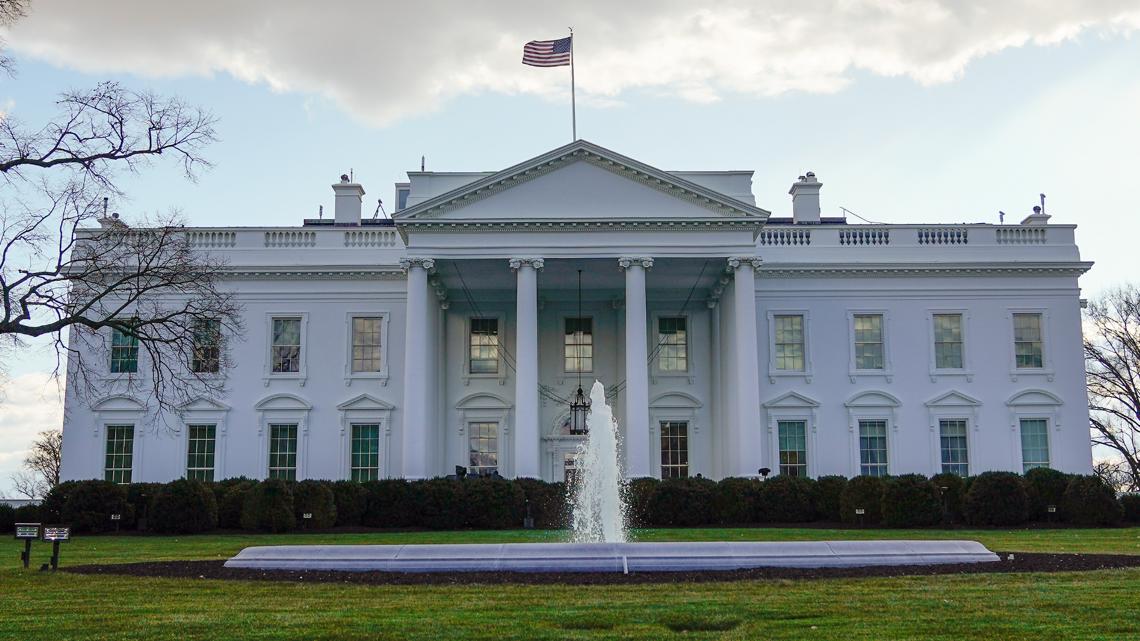The race for the White House all comes down to 270 Electoral College votes. Here’s a guide to how many votes each state gets this year to decide the presidency.
WASHINGTON — With just a few weeks to go before Election Day, Vice President Kamala Harris and former President Donald Trump have been frequently visiting the battleground states that could decide the next leader of the United States.
When it comes to who wins the White House, the Electoral College will ultimately decide the winner once all the votes around the country are counted.
But there have been five times in American history, and twice in the last 24 years, that the U.S. presidential election was not won by the person with the most overall votes.
What is the Electoral College?
The U.S. is the only democracy in the modern era to use the Electoral College, which appoints electors to represent each state’s interests when it comes time to certify election results and count the vote.
Each state gets as many electors as it has members of Congress. Washington, D.C. also has three Electoral College votes. There are 538 electoral votes up for grabs and in order to win the presidency, a candidate has to secure 270 of them.
In 48 of the 50 states, the Electoral College operates in a winner-take-all system, meaning whichever candidate wins in the popular vote in that state gets all of its electoral votes. Maine and Nebraska use what’s called the “congressional district method,” giving two electoral votes to the state popular vote winner and one vote to the popular vote winner in each congressional district.
Which states have the most electoral votes?
California, the most populous state, has 52 representatives in the U.S. House of Representatives. So, combine that with the state’s two senators, and it has 54 electoral votes.
Texas has the second-most with 40 electoral votes. After that, Florida has 30 votes, and New York has 28. Then, it goes to Pennsylvania and Illinois with 19 each.
Number of electoral votes for each state
Since the 2020 election, 13 states have either gained or lost electoral votes for the 2024 presidential contest based on the 2020 census. The numbers in parenthesis reflect those states with different Electoral College votes this time around.
Alabama – 9 electoral votes
Alaska – 3 electoral votes
Arizona – 11 electoral votes
Arkansas – 6 electoral votes
California – 54 electoral votes (-1)
Colorado – 10 electoral votes (+1)
Connecticut – 7 electoral votes
Delaware – 3 electoral votes
District of Columbia – 3 electoral votes
Florida – 30 electoral votes (+1)
Georgia – 16 electoral votes
Hawaii – 4 electoral votes
Idaho – 4 electoral votes
Illinois – 19 electoral votes (-1)
Indiana – 11 electoral votes
Iowa – 6 electoral votes
Kansas – 6 electoral votes
Kentucky – 8 electoral votes
Louisiana – 8 electoral votes
Maine – 4 electoral votes
Maryland – 10 electoral votes
Massachusetts – 11 electoral votes
Michigan – 15 electoral votes (-1)
Minnesota – 10 electoral votes
Mississippi – 6 electoral votes
Missouri – 10 electoral votes
Montana – 4 electoral votes (+1)
Nebraska – 5 electoral votes
Nevada – 6 electoral votes
New Hampshire – 4 electoral votes
New Jersey – 14 electoral votes
New Mexico – 5 electoral votes
New York – 28 electoral votes (-1)
North Carolina – 16 electoral votes (+1)
North Dakota – 3 electoral votes
Ohio – 17 electoral votes (-1)
Oklahoma – 7 electoral votes
Oregon – 8 electoral votes (+1)
Pennsylvania – 19 electoral votes (-1)
Rhode Island – 4 electoral votes
South Carolina – 9 electoral votes
South Dakota – 3 electoral votes
Tennessee – 11 electoral votes
Texas – 40 electoral votes (+2)
Utah – 6 electoral votes
Vermont – 3 electoral votes
Virginia – 13 electoral votes
Washington – 12 electoral votes
West Virginia – 4 electoral votes (-1)
Wisconsin – 10 electoral votes
Wyoming – 3 electoral votes


